An eternal love affair
It’s hard to believe that I’ve been writing Liner Notes for almost a year. Also hard to believe: I have yet to write an article dedicated to the one thing that started it all: tango
Sure, it’s come up a bunch..I am a tango musician after all. But I’ve never really stopped to tell you what tango is and what it means to me. This art form, style of music and way of life has changed everything for me, and in an odd way, offered me a limitless way to make art.
Oh, by the way: if you want to hear the story of how I got into tango, how I landed in Buenos Aires 30 years ago knowing nothing and left 6 months later a convert, you can listen to every detail on the first episode of my brand new podcast, Why Tango. My co-host Heyni Solera and I tell you how we fell in love with this amazing music and why we think you will too.
OK, let’s get into it.
When I first heard tango, I noticed something really visceral and exciting, but I couldn’t describe it. Thirty years later, I think I finally can: there were three things which grabbed me. Three things. So, to get the ball rolling, I want for you to see and feel what I did, by watching just 10 seconds of each of these videos. THIS is what got my attention:
See what I mean?
But there’s more.
Tango often contradicts itself. It’s sad but fun. It’s rootsy but sophisticated. It’s conservative and avant-garde. You play it by ear, but you can also write out the most elaborate orchestrations. It’s from Buenos Aires but now it’s created around the world. It’s dance music, right? No, it’s music for listening…no, wait, it’s music for singing.
As it turns out, tango contains all of these contradictions and in them, everything I was always looking for.
I never identified strictly with classical, jazz, or rock. No, I wanted it all: to be able to sit around with my friends and play by ear, but also write complicated compositions and have them performed by virtuoso players; I wanted music that had some grit and groove, but not only those things; I was really drawn to tradition, but also had a burning desire to create something brand new. Eventually, it was clear to me: tango has it all.
For a newcomer, it’s not obvious where to start, so here’s a crash course and a few suggestions for your upcoming adventure discovering tango.
Tango, “the lament of the Italian immigrant in the port of Buenos Aires,” developed in the early 20th century, with Afro-Spanish roots mixing with the sensibilities of the newcomers from Italy and Eastern Europe.
Also there’s a good chance that whatever you know about tango comes from one of two sources, which in my opinion have unfairly overshadowed the rest: 1) social dance music from the 1940’s and 2) the music of Astor Piazzolla.
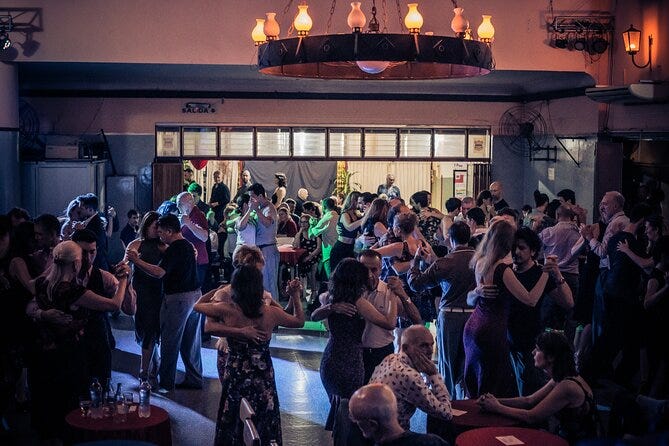
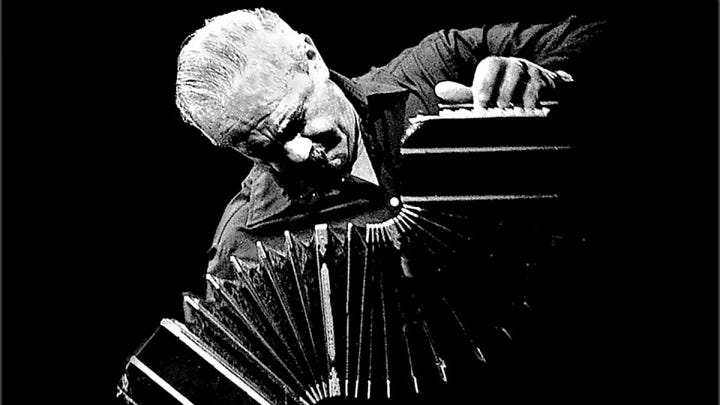
I am going to bare my soul to you and admit that I have struggled with both of these things.
For years, I really had a hard time with dance music, dancers’ narrow preferences, and the domination of the social dance scene outside of Argentina. And I definitely had a hard time with Piazzolla’s gigantic stature in the world of classical music (also outside of Argentina), a struggle which I admitted in this interview, and which I finally came to terms with.
Those two items have taken up too much of the spotlight in what is, in fact, a vast and diverse universe of music. So I’d like to start by shining a light on a few overlooked areas of tango which you really can’t afford to miss.
The guitar has been in tango since the beginning, but you won’t generally find it in tango orchestras, where it’s, frankly, pretty hard to hear.
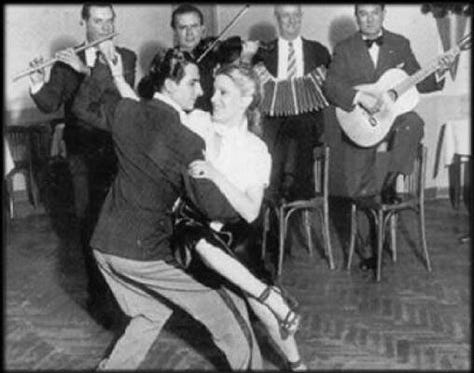
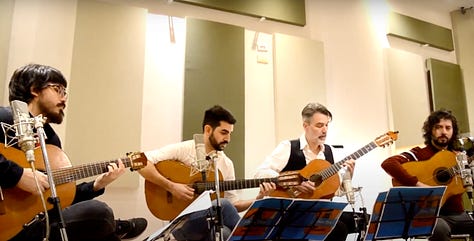
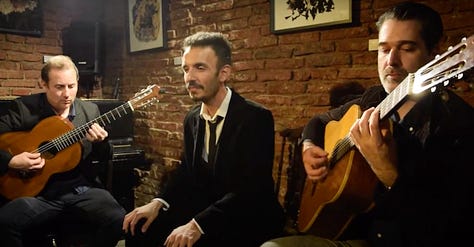
That’s right, guitars stick together in packs of 3’s and 4’s, and traditionally have been used to accompany singers (although I’ll turn you on to some incredible instrumental tango guitar too).
Tango history also has a handful of incredible solo guitarists like Aníbal Arias, with whom I was very fortunate to study.
Tango guitar has always existed outside of the spotlight, but has always thrived, even when the rest of the art form was going out of style. And Buenos Aires currently has TONS of professional tango guitarists, a big reason I moved here. Also, they’re super friendly! You can pretty much walk up to one after a show and end up being invited to the after-party. I can’t tell you how many times I ended up with a bunch of friends and strangers in the wee hours of the morning, playing tunes long after the bar had closed.
As an art form, tango is said to have three pillars: music, dance, and poetry.
If you’re not a Spanish speaker, the poetry part is a bit harder to access, but suffice it to say: tango has amazing lyrics, and during its big boom in the 1940’s a core of lyricists with classical training and porteño identity became known as “tango poets.” The body of work they created is like the Great American Songbook in jazz: the apex of craft in popular song, in terms of music and lyrics. These are the tango standards we still play today. And tango singing is one of the hardest styles to learn: very porteño and very dramatic.
And of course, one of the most fertile areas in this musical landscape: the 21st century.
The boom in tango innovation in the past 25 years has been so massive and so exciting that Buenos Aires is now a mecca for creators. Tango musicians move here like jazz musicians flock to New York.
The parallels with NYC are pretty interesting: in both places, non-natives put down roots in order to learn the music, participate in the community, and eventually create their own original projects. The new music comes in every size and shape: rock- or jazz-influenced, chamber music, singer-songwriters, feminist perspectives in a field which for generations was quite sexist. It’s an exciting time for tango.
Finally, I’d like to tell you about to those two things I mentioned complaining about for so many years: 1940’s dance music and Astor Piazzolla. As it turns out, they’re both pretty great.
The 1940’s are called the Golden Era of tango: everyone went to dances, followed the popular orchestras, and knew the words to the songs. The current century has also been pretty golden so far, in the sense that a revival of 1940’s-style social dancing has conquered the planet.
You can now find tango communities everywhere. During all of those years I spent griping about the dance scene and dancers’ tunnel vision, their passion was driving tango’s popularity and creating opportunities for all of us, worldwide. So here’s to you, my dancing friends.
As for Astor Piazzolla, here’s what used to be so hard for me: I’ve come across so many music lovers (and musicians) who believe that “tango” can be summed up in the music of this one composer. It can’t.
For a moment, imagine if jazz were unknown outside of the United States, but one jazz musician, let’s say Pharaoh Sanders, became famous in the rest of the world for being an innovator. And let’s say that Pharoah made it his mission to go around the globe promoting his new version of jazz and getting others to play his music, leaving the world full of “jazz fans” who only know Pharaoh Sander’s music, and musicians who love recording and performing it, but don’t know anything about Miles, Monk, or Coltrane…meaning they don’t really understand jazz. That’s exactly what happened with Piazzolla.
Because of this, I had a difficult time warming to his music. But when I finally started listening to recordings of Piazzolla played by Piazzolla I got it: He was a true tango musician and a true original. Now I’m a fan and I hope you’ll become one too. In fact, I found his commitment to originality so moving that I produced a whole album inspired by it.
If you’re still wondering why this music changed my life, remember: tango has it all.
And now, the fun begins. It’s up to you (with a little help from me) to start listening and discovering. As I’ve been saying, there are many, many different flavors here, and something for everyone: If you’re into cerebral chamber music, you’ll find it; rock-like singer-songwriters? We have that too; classic tango for dancing? Of course! A tango orchestra led by a saxophone? Anything you need.
Given the range of style, I’ve made up a list that aims to have a track or so from each sub-category. Think of it as a series of “tips of icebergs.” When the tip of any iceberg grabs your fancy, please let me know! I’d be happy to help you dig in and find more.
THE LIST - Part 1 of 3
I have a total of 30 tracks, which is a ton, so I’m going to be giving you 10 at a time for the next three posts. I mixed new and old, serious and fun, instrumental and vocal. Feel free to let your fancy lead you…no need to go in order. Also, I pretended to be a music critic and wrote a quote for each.
Happy listening!
Vida mía - Atilio Stampone
“If a Hollywood movie orchestra had a baby with a tango orchestra.”
Chipi Chipi - Quiero 42
“Sounds like a tango rock band playing for a circus.”
Responso - Aníbal Troilo
“You wanted to hear the best ever recording of a tango?”
La Llave - Juan Seren & Quinteto Criollo González Caló
“Tango’s Tom Waits.”
A Pedro Maffía - Aníbal Arias
“I though there was no guitar in tango.” Aníbal Arias: “Hold my beer.”
Subrealidad - Orquesta Típica Fernández Fierro
“FF stands for fortíssimo, and Fernández Fierro…both are really loud.”
El cantor de Buenos Aires - Roberto Goyeneche
“You wanted to hear the epitome of tango singing?”
La Yeta 13 - Diego Schissi
“If you have really good taste in contemporary music and are curious about tango, you must hear this.”
Palomita Blanca - Quinteto Real
“Imagine Mozart if he were born in Buenos Aires and put together a band to do brilliant show-off stuff.”
Cambiando cordaje - El Tape Rubín
“21st-century Gaucho singer-songwriter with and awesome guitar group.”



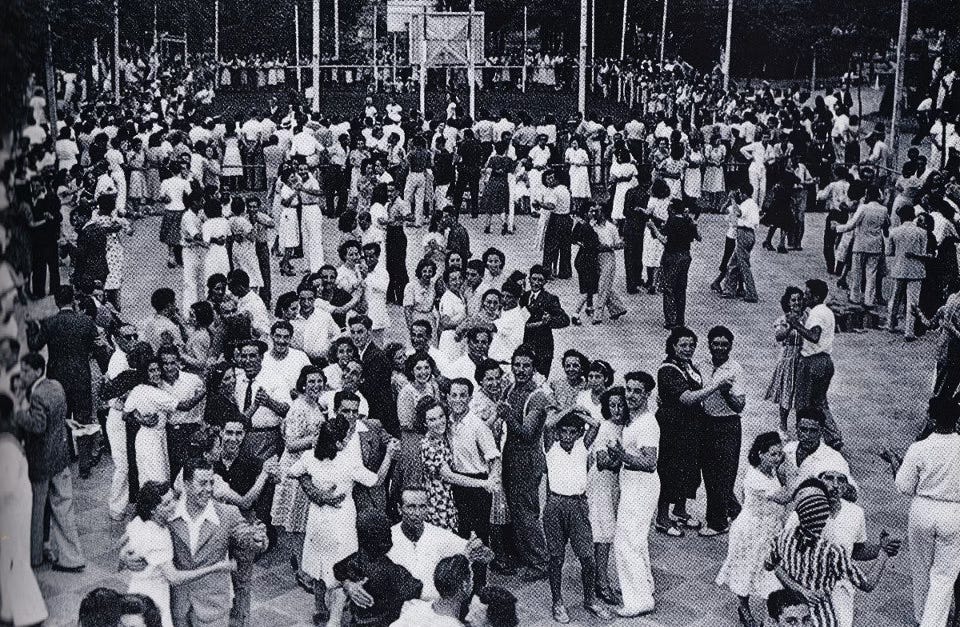
That's me in a nutshell, too, Adam! It is all possible.
All of my colleagues have these skill sets.
Virtuosos/Improvisers
Ear players/Great site readers
Folk lovers/guilty pleasure seekers
traditionalists/futurists
soloists/accompanists